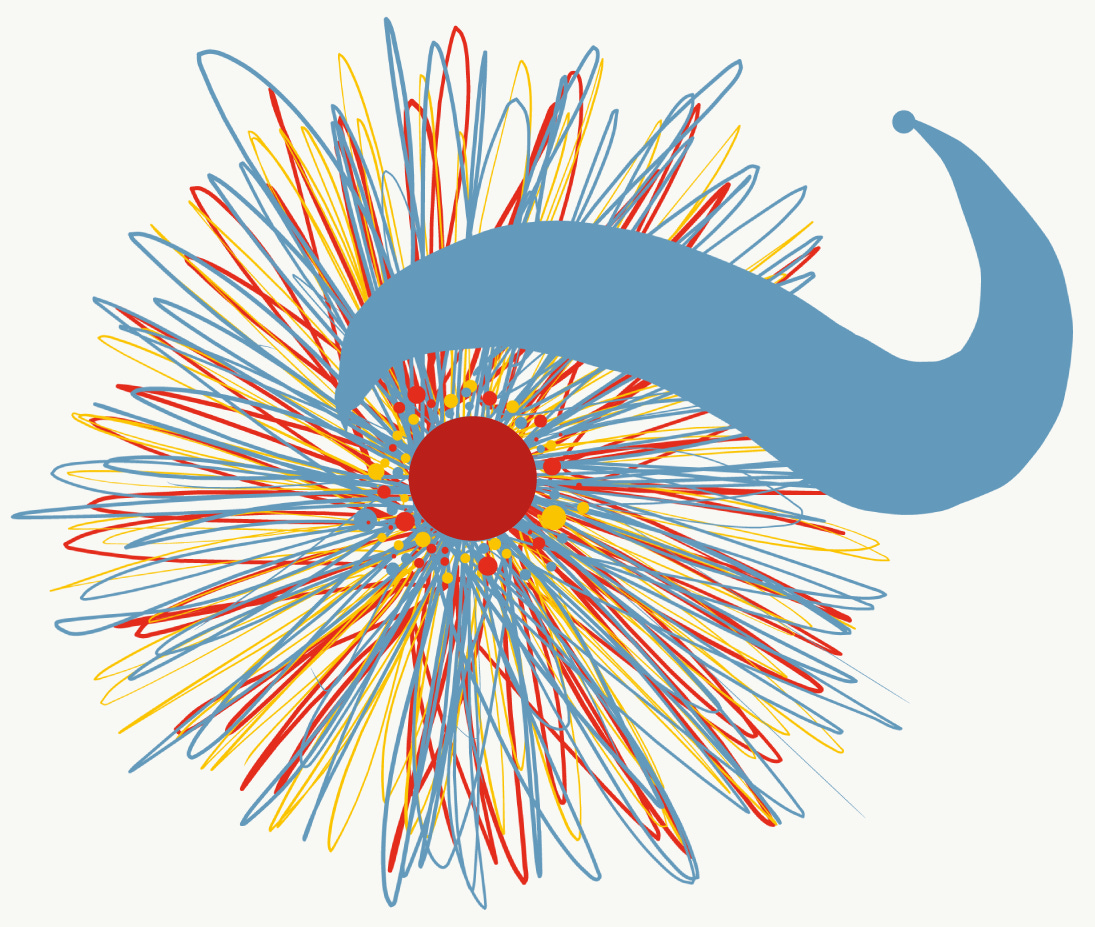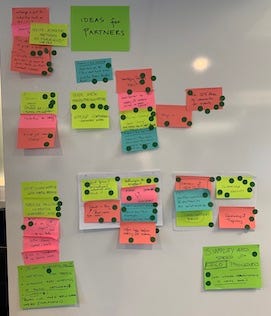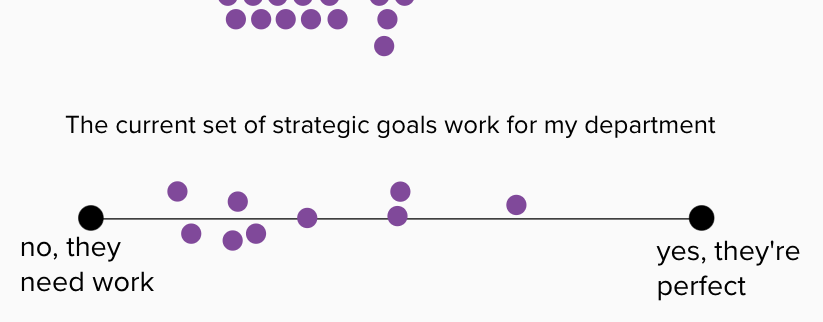Are you making mistakes with 'dot voting'?
Congratulations! You’ve just gotten a new collaboration project signed off. Maybe it’s a sustainability engagement initiative, a new framework for user experience, or a reinvigorated regional strategy.
It’s exciting -- bringing the 8 key stakeholders together and getting lots of ideas up on sticky notes (see more about sticky note benefits in this post). As the leader, you have the trust of the group to help them choose which idea(s) to take forward. Deciding is important because it shapes the focus for the rest of the session, whatever’s chosen becomes the priority. So let’s build more confidence with decision-making approaches.
The most familiar method is ‘dot voting’. Each person gets some colored dots to stick on the ideas they like best. On the face of it, dot voting is a straight-forward way to choose one, or a set of alternatives for further development. But there are couple of potential problems: bias and dot weight. Need consensus? Dot voting can be a step in consensus decision making.
Bias
During dot voting, it’s easy for people to be Influenced by how others vote. For example if you see your boss voting for something, you may be tempted to vote for it too (authority bias). If you see some ideas getting several dots, you might be tempted to pay more attention to those because other people have (social proof).
You can reduce bias in a few ways. One approach is to ask people to review and plan all their votes before placing any dots. Another approach is to vote in secret by giving each idea a number and asking people to write down the 1, 3, or however many ideas they can vote for.
There are also online tools and analogue tools that provide ‘secret’ voting platforms, such as Decido or Feedback Frames.
If you’re concerned about authority bias, you can also organize the order of voting, so that, for example, the most junior staff vote first and senior leaders vote last. Or if engineers, or some other group, tend to be most influential, have them vote last.
Dot weight
And that leads to the question about the weight or meaning of each dot. You can give people more dots (even unlimited dots), to generate a ‘heat’ map, or fewer dots to narrow down the selection of ideas. Another option is to include ‘opposition dots’ that people can use to vote against an idea. You can also give out different ‘ranked’ dots for 1st place vote, 2nd and 3rd.
In many cases your project will be ‘owned’ by, or responsibility will sit with, a senior leader. In that case you may want to appoint that person as a ‘Decider.’ The Decider votes at the end, usually with one dot. The Decider usually has about 10 minutes to consult with the team and a few minutes after to explain the decision.
Below is a heat map from a recent session I ran, where it turned out most of the idea clusters had appeal. In this situation the decider was looking for a group of options, so wide appeal was a good result that gave the decider more flexibility.
Consensus instead
Ultimately you may need to reach a consensus. One option for this is using an initial round with ‘named dots’ that contain the initials of the person voting. This lets everyone see where the stumbling blocks are. After structured discussion, the facilitator can check positions on a ‘thermometer’.
Below is an example from a workshop I ran on strategic goals. I used this at the start, but you could also use this for working towards consensus, possibly with people putting initials on their dots. If you want to get people physically moving, you can also create a ‘line’ on the floor and have people literally stand in their positions on the floor thermometer.
Another approach to consensus is the ‘1-2-4-all’ tactic from Liberating Structures. In this process, individuals first choose their top option(s), then they go into a pair and discuss their top options, arriving at the pair’s top option. Next two pairs meet and four people discuss their options and agree the top option for the foursome. Finally, the whole group (let’s say 8 people) join and settle on the group’s top option.
So there you have some tools to build confidence in collaborative decision making. Have you tried dot voting? What was your experience?





I was just thinking through the 'secret' dot voting which I like the idea of. When you ask participants to plan their votes before placing the dots, do you think they change plans at the last minute and follow the dominant vote (or person) anyway? I wondered whether it might help to take the votes in first? Perhaps something that may apply to be an issue in some participant groups and not others (I am thinking of students).
I've tried dot voting, and I definitely fell for the trick of adding mine to what others had already chosen! I like the idea of secret initial voting, and the tools would make that a lot easier. Thanks for this!